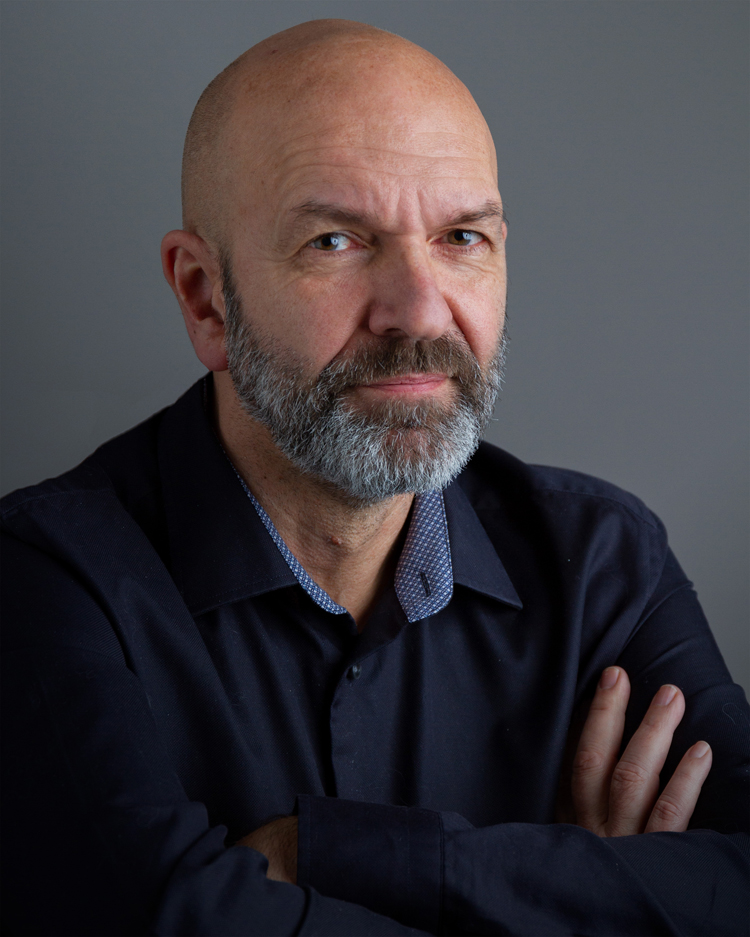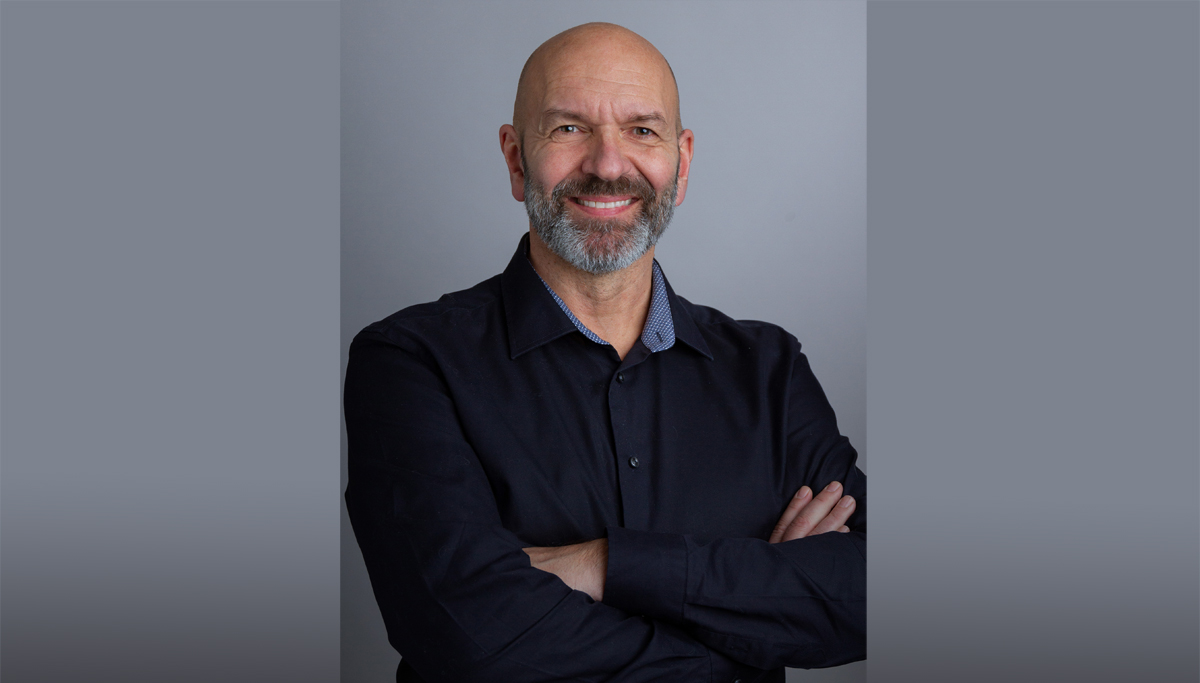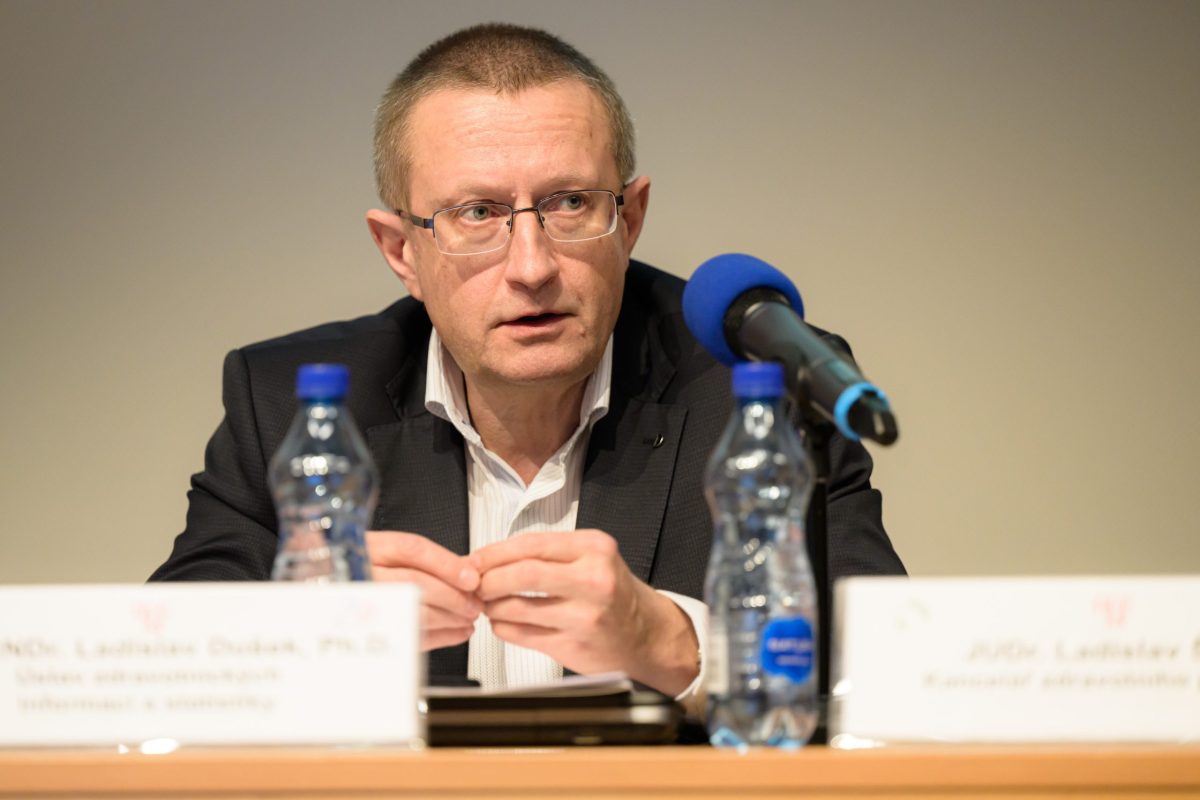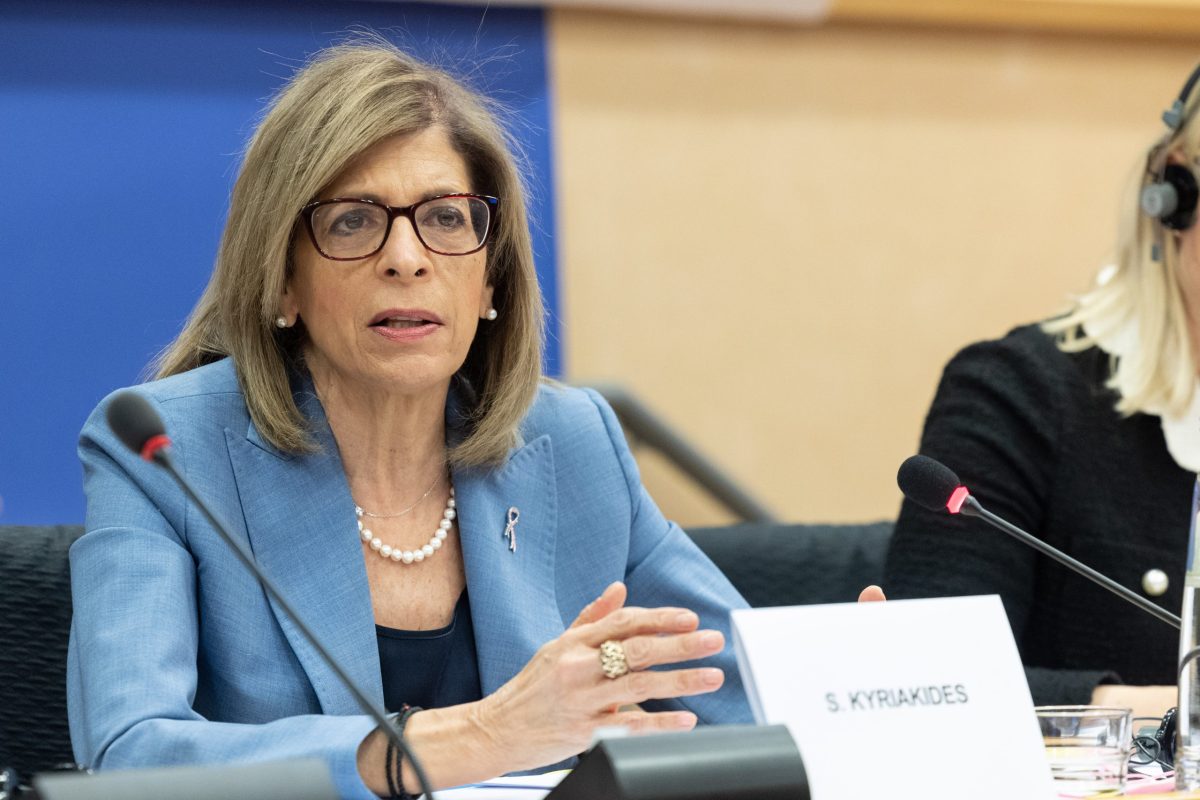Should anyone know anything about a fully digitized healthcare system, it is Denmark. Thus, it is no surprise that the Czech Republic, where healthcare digitization has just cautiously began, is also trying to learn something about the Danish experience. Henrik Ledgaard Ibsen, CEO of OTH.io and an IT expert specialized in remote patient monitoring, came to Prague to share his knowledge. In an interview with Zdravotnický deník, he explains, for example, why video is not a good solution for telemedicine or why the government itself has to take care of its digital healthcare critical infrastructure.
In Denmark, healthcare is 100 % digital. What does it mean for the patient?
Patients don’t have to carry their papers with them. If they come to a doctor or a hospital, everything about them is available online. Medical records, lab results, prescriptions, previous engagements, anything imaginable. There is no situation where you do not have the necessary information at your availability in the healthcare system when you move in it. There are also special records for certain conditions, like pregnancies, or diseases, online directories for medication, best practices. Everything you can imagine that is important and pertinent to your health is available online, digitized.
Are medical records stored somewhere in a secured cloud or do healthcare providers share them among themselves on request?
There is a highly secured cloud called the Health Data Network with an operational task to handle all the records in a centralized station. Only healthcare providers or the system authorities have special access to it.
Mohlo by vás zajímat
Who manages the cloud?
The Danish Health Data Authority which is co-owned by government, regions, municipalities, and GPs.
And it takes all the responsibility for the protection and security of the data?
Yes. The data is heavily encrypted because the GDPR provides very extensive rules about access, encryption, documentation, logging, and auditing. Everything has to be very transparent and visible. Patients are able to see who has access to their files, and select people who are not allowed to see it. So whenever as a healthcare professional you go to a record, if you are blacklisted for the access, you will not have access. The level of protection is extremely high because of the GDPR. We have been doing this in Denmark for more than ten years now, so it’s been built gradually to conform to security rules. We have not had any leaks, yet.
Who is the owner of the data?
Basically, all data about patients are owned by the government of the state. But they are not allowed to use it without the patient giving his or her consent to it.
What about the secondary use of this data, for research, etc, is it possible? And how is the patient consent secured?
The data can be used for research but, of course, subject to patient consent and in an anonymised form. There is a database that handles consent management where the patient can actively give consent. We have consent databases for donating organs, accessing records for research, or other purposes. There is an established system for giving consent, extracting data for research purposes, giving them to the researchers, and applying them in scientific research. This is handled by regional governments.
For example, if you are enrolled in a chronic disease programme, you will probably meet a request to give consent to your data to be utilized in a clinical trial or a research project. So when you give that consent, your data will be extracted, anonymized and given to the researchers and used over 6 to 12 months.
To what extent does 100% digital system allows for monitoring and reimbursing not only diagnoses and related procedures but also the quality of healthcare provided?
The quality of care is not a reimbursable issue. It is more like an ethical than an absolute standard. So quality of care is something you hope for but you never guarantee because also doctors are different.
800 vs 20 patients a day
Before our interview, you told me that you would like to share with the Czech Republic the mistakes that Denmark made in telemedicine. What were the mistakes?
One very clear takeaway is that you cannot use video as a primary technology for telemedicine. It’s actually quite clear. When you use video for telemedicine you need to have both the patient and the healthcare professional at the same place, at the same time. It may take 15 or 30 minutes, and after the meeting, the doctor may immediately process the next patient. Yes, it provides an advantage for the patient, he or she does not need to go to the doctor.
But then there is the asynchronic remote monitoring system. Instead of having a video call, questions are given and answered, you give your measurements and send it to the doctor. You can do this by yourself. This system where you send the data and it is first processed by a nurse for evaluation of your condition will allow the nurse to process 800 patients a day. With the video call the same nurse with the same information can process maybe 15 or 20 patients a day. So this is 800 versus 20 patients. Video is obviously a grossly inadequate technology for telemedicine because it is not effective as regards the system.
And in Denmark, the situation is the same as in the Czech Republic – there are too few nurses, too few doctors, too few hospitals, but too many people growing old and becoming chronically ill. 80 % of the healthcare budget goes to chronic diseased people, so this is a huge problem. And if you use a technology where nurses process 20 patients a day, it does not give you the answer because the only difference is that the patient does not need to go to the doctor. It does not increase the processing capacity of the system. So this is one mistake.
And another one?
Also very clear. You should not go to hospital and tell them: “Now you have to do virtual care because it is the future. We have a system from Denmark which works, we copy it, no problem with it. And we will save money”. Do you know what the nurses and doctors are going to say? “We don’t have time for that, correct? We are busy, get out of here.” So that mistake you should not do, too.
So what is the right approach, how to convince doctors and nurses used to “physical” healthcare provision to “switch” online?
You need to build a virtual healthcare organization, outside that hospital. And instead of trying to use the same people that are already stressed in that house, you look at which nurses are on maternity leave but want to work one or two days a week, which doctors are retired and living elsewhere. So you can utilise all the resources that are not otherwise available in that hospital setting. Or nurses which are already tired of long night shift and rather decide to take early retirement and care for their grandchildren. Instead, they can join this virtual hospital two days a week, sit in their own room and process how many patients they want.
Now this is a different proposition, then you are not bothering the hospital itself. You are offloading the hospital into an organization that they can trust, which has a capacity that does not cost the hospital extra resources. They don’t have to learn or train anything, they can just do what they do best.
The virtual hospital will monitor the patients and send them for check-up to the physical hospital if they are bad. The rest are fine and can stay at home. It means that the hospital need not waste 85 % of their time on checking up on patients that don’t really need it because the system makes sure that only those who need care will go to the hospital.
And this is the way it works in Denmark now?
Somewhere, not everywhere.
The doctors should decide themselves which application they want to use
How are technologies to be used in such a virtual hospital selected?

In any situation where you want to provide telehealth, you need to be able to provide a single infrastructure, a single system that works. The doctors and nurses need to have a single point of entry to data and results, not a dozens of apps which they don´t use in the end. It should be no complicated national infrastructure but a very low key simple system which gives the hospital the ability to decide which application they want to use. This is the key. In order to succeed, the doctors need to be able to decide autonomously – which data they need, how they need it, what kind of measurements they need and when. And they need to be able to select a system based on a number of criteria which cannot always be manifested somewhere in a legal system.
So you need to build an infrastructure where you have a solid backend, that makes it simple for the healthcare professionals to work with the data, and a very flexible frontend. Then you can have a lot of different apps for different purposes but all data flows into the same backend. And for the healthcare professional, it is easy to access the data and do the interventions.
But still the apps need to meet some security and safety criteria.
Of course, but all of this is regulated by the EU Medical Device Regulation (MDR).
Is MDR sufficient in this context?
MDR is based on the assumption that whatever is given to the patient, it has to be risk-free. So when you build a software, in the context of the MDR it is called a software medical device (SaMD), it means that you have to verify that it is secure. In order to get the MDR CE mark, you need to build a quality management system called ISO 13485. When your software conforms to this, you have something that is very solid, very secure, well documented and can be given to a patient. So this is the official access criteria.
However, just having such a software is not enough. It has to be practical, too. If it makes the use scenario difficult for the doctors, nurses and patients, then you haven’t achieved anything. You need to develop it in a way that it will support the doctors and nurses in making it as invisible as possible.
Who should manage or supervise all this?
There should be a public-private institution with stakeholders from the public institutions as well as the private area. So you have a joint commitment to do this in the right way and support from all the different parties. Everybody needs to be taken on board, it should not be done just by the minister of health. This institution should be tasked to build a national infrastructure that works. But it is only half the job done. It is also necessary to talk to doctors and nurses and ask them how this is going to help them, instead of getting in their way.
Everybody needs to be taken on board, you say. But is it possible to satisfy all? Doesn´t it make the decision-making difficult?
You need to have stakeholders across all the sectors. Because if this is a hospital thing, it’s not going to work. It has to be a hospital, doctor, nurse as well as home-care kind of thing. So all the people involved in people’s health needs to be on this. They need to be engaged, participate and contribute actively also because the next step is the population health management.
What is that?
It is the ability to gather healthcare data from millions of people to screen the population for indications that may lead to hospitalisation (high blood pressure, pre-diabetes, obesity, etc.). You look for people that are not ill yet but soon will. And in order to do that and do the preventive effort that stops them from coming to the hospital in the first place – because that is where the money lies – you need to have solid experience with telehealth and technology that works, everybody trusts and is committed to it. Only then you can appoint a route to go without anyone blocking. If they are not part of it, it crashes.
What about patient organisations, should they be taken on board too?
Yes, they should be there, too. And in Denmark, they can be quite influential and as such they need to be committed as well.
This population health management using telemedicine, are there any data available about it from Denmark?
When we started telehealth platforms, we very quickly did what we called clinical trials. Clinical trials serve the purpose of showing that it actually works, the patient life quality increases, and government saves money. This is documented and without any doubt. For example, we have shown that by implementing telehealth we can save 15€ per patient with a heart failure per day. In the Czech Republic, there were 300.000 patients with a heart failure in 2018. And this is kind of leverage you need to say the politicians – we need to do this because we can literally save billions of euros by implementing simple telehealth for the population. And these billions of euros can be used to improve the public healthcare system and drive the long-term changes that are important. Without the dependence on the EU funding.
Like building blocks
You have stressed the importance of public-private partnership. It has a long tradition in Denmark. However here, it is quite a sensitive issue, also due to our long history of vendor lock-ins. What is your advice how to approach collaboration with IT companies to make it successful for both sides?
Well, it is clear that healthcare digital evolution cannot be dependent on private enterprises for critical infrastructure. So the government needs to build and grow its own infrastructure, databases, integration platforms, and public portals, just to mention a few. Parts can be bought on the market, other parts will have to be built. Some can even be provided from Denmark as they are owned by the combined Danish municipal, regional and central governments.
So I would recommend to the minister of health to set up a company that is 100% owned by the ministry. Everything that it develops is also owned by it but it can be managed by the vendor. The ministry of health thus decides what the environment looks like, how it works, how it operates, how it integrates, how it’s deployed, how it’s managed. If you define the framework and controlled environment as the minister of health, you can actually, with minimal effort, control the entire system, even though there’s still a lot of money going to the vendors for it. So, for example, Oracle products run inside box that is well-defined and owned by the minister of health. And if you want to change the technology, it is this private organisation of the minister of health whose job is to describe the scenario. What we did in Denmark was to build such a box that was basically a healthcare cloud for services and then different vendors were allowed to put its services into it.
So it is actually quite simple when you look at it this way. If you manage the interfaces, you control the content. Managing the interfaces is much easier than actually building the content. This allows you to have a lot of different components that can be supplied by a lot of different vendors and this way you isolate areas of change which is enormously important. Each change area can have a different vendor.
It reminds me of building blocks.
Yes, like Lego building blocks, exactly. For example, I want to have a database or register for consent management or medication or interactions of medications. A vendor can build that but it has to run in this infrastructure which I have predefined and it is policed and managed by this private company of the ministry of health.
Why it cannot be managed by the ministry itself?
The downside of this approach, i.e. controlling the environment, is that you have to be very good at documenting. What you do and why you do it, when you do it, how you do it. So that the vendors and the private companies know exactly what environment they work in. And this requires a lot of quality work and with all respect, it cannot be done at the ministry. Because their job is to administrate regulations, rules, guidelines. So if they are to build a national system for anything, they need to have a dedicated partner that gets his hands dirty. This can be done by a private company owned by the ministry or public-private company owned by public and private partners.
In Denmark, we have Healthcare Denmark, owned half by the government and half by different healthcare companies. It is something like a sales organisation for Danish healthcare. It is well-functioning, everybody agrees this is a good thing.
This also makes the system more flexible than if it all is done by a public authority, I suppose?
Yes, it makes it more flexible. When a project does not perform well, you can act more quickly, you can hire and fire people like anybody else, not tolerating low-quality work for long months, not hiring extra consultants to get the job done. The worst thing about being a manager in a public institution is that you know how to fix the problem but you cannon fix it because you need to follow all these procedures. This is a public nightmare. This is why public institutions will never build anything but always manage, set regulations and rules and pass the task to someone who has the mandate, surroundings and preconditions to do what needs to be done.
Another problem about the ministry is that they need to do tenders. They hire experts who prepare big specifications and dream up a fantastic system but in the end, it fails.
What do you suggest instead?
Something I call a beauty contest. The contestants have to fulfill certain defined criteria and if they succeed in it, they are given three or six months in different hospitals. The same project, different technology, with the same purpose and the same scope. And then you have the matrix for evaluating the results – costs, effectiveness, etc. You see what works and what works not, no fantastic project needed. This is a very practical approach.
Helena Sedláčková







